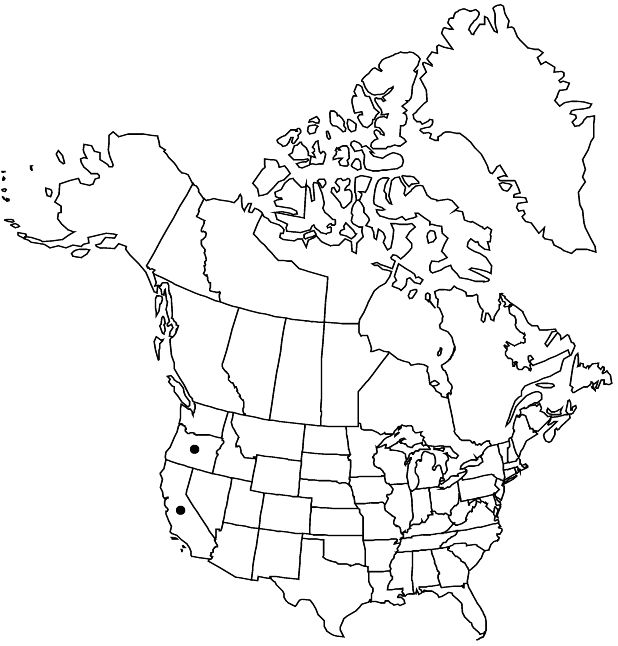Heuchera merriamii
Bull. Torrey Bot. Club 32: 199. 1905 (as merriami),.
Herbs acaulescent; caudex branched or unbranched. Flowering stems 11–32 cm, long stipitate-glandular or glabrate. Leaves: petiole (2.4–5 cm), moderately long stipitate-glandular; blade orbiculate, reniform, or pentagonal, shallowly 5–7-lobed, 2.5–4.5 cm, base shallowly cordate to truncate, lobes rounded, margins dentate, apex rounded to obtuse, surfaces finely long stipitate-glandular abaxially, sparsely long stipitate-glandular adaxially. Inflorescences dense; (bracts linear and scarious to 3–5-parted and herbaceous). Flowers: hypanthium radially symmetric, free 0.5–1.5 mm, pink, hemispheric, 3–5.5 mm, (base rounded), densely long stipitate-glandular; sepals erect, green- or red-tipped, equal, 1–2 mm (often wider than long), apex obtuse; petals erect, white, oblanceolate, (clawed), unlobed, 2–3.5 mm, margins entire; stamens exserted 0.8–2 mm; styles exserted 1–2 mm, 1.5–2.5 mm, 0.1+ mm diam. Capsules ovoid, 3–5 mm, beaks divergent, not papillose. Seeds dark brown, ellipsoid, 0.6 mm. 2n = 14.
Phenology: Flowering Jul–Aug.
Habitat: Exposed granite ledges in subalpine forests
Elevation: 1500-2500 m
Discussion
Heuchera merriamii is known from the Siskiyou and Trinity mountains.
Selected References
None.
